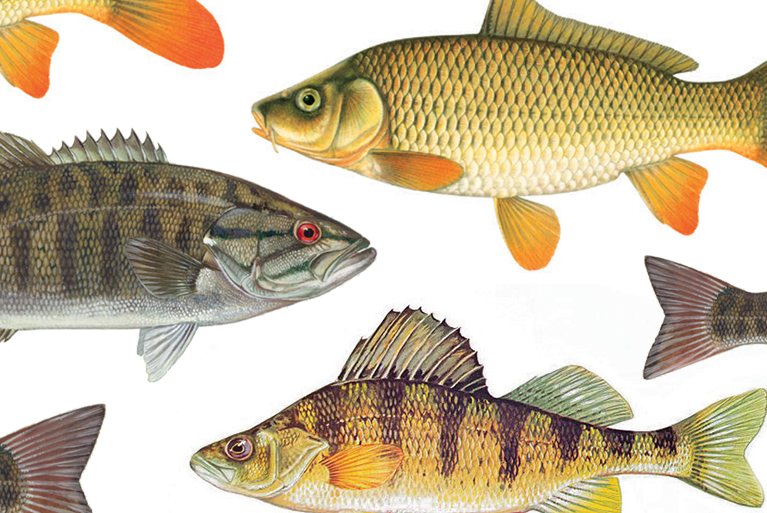There is a threat to British Columbia’s freshwater fisheries lurking below the surface. It is growing in numbers, and can prove extremely hard to remove after taking hold. Many of B.C.’s native fish are struggling to compete with it. We are talking, of course, about invasive species. While the rhetoric may sound dramatic, the reality is that these “out-of-towners” pose real perils – economic, social, and environmental – to freshwater fishing in British Columbia.
What are invasive species?
Invasive species are plants or animals that do not originate in B.C., meaning they have been introduced to our waterways from another geographic area. Often, invasive species compete with native species for resources, and have a negative effect on the local ecosystem.
Why are they a problem?
Introduced species can either steal food resources, or prey on the native population. Small fish (such as native minnows, juvenile salmon and trout, and sculpins), amphibians, and small crustaceans are at particular risk. Once established in an ecosystem, invasive species can be extremely difficult and expensive to remove. For example, one method for treating a lake overrun with invasive fish species is to apply a treatment of rotenone, a naturally occurring and biodegradable compound that kills gill-breathing fish by suffocating them. In the Thompson-Okanagan region, the cost for this treatment (depending on the size of the waterbody and other factors) has ranged between $30,000 and $500,000 per lake. In the 10-year period between 2007 and 2017, the Ministry of Forests, Lands, Natural Resource Operations and Rural Development spent over two million dollars treating 12 lakes.
While some of these species have been established in regions for many years, they have recently been spreading into new areas at an increasingly rapid rate. Studies have shown that the number of freshwater invasive fish species in B.C. has risen steadily since the 1900s, with the detected number of different invasive fish species at 30. When you consider that our province only has 80 freshwater or searun native fish in total, that’s a worrying proportion of invasive fish. The distribution of these species has also spread, with 25 of our province’s 35 ecological drainages reported as having invasive fish present.
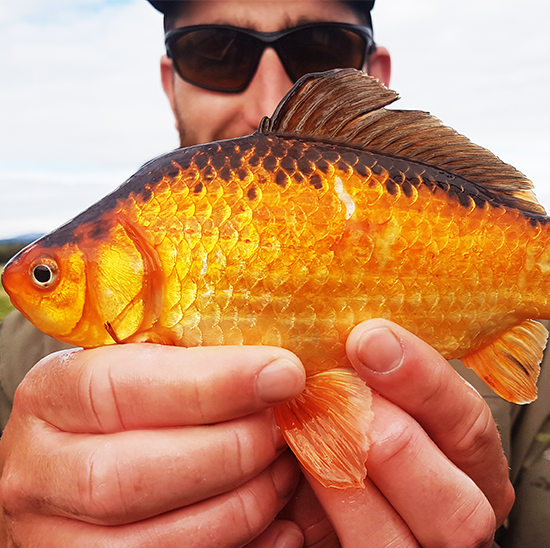
How are they introduced to B.C.’s waterways?
Two of the most common ways invasive species are illegally introduced to a new area are by accident, or deliberately to create a new fishery. It is illegal to move fish between waterways in B.C.; perpetrators can face fines of up to $100,000 for first-time offences, and/or a prison term of up to 12 months. It is also illegal to have live fish in your possession in the wild and, in most parts of B.C., the use of live or dead finfish for bait is strictly prohibited.
Common aquatic invasive fish species in B.C.
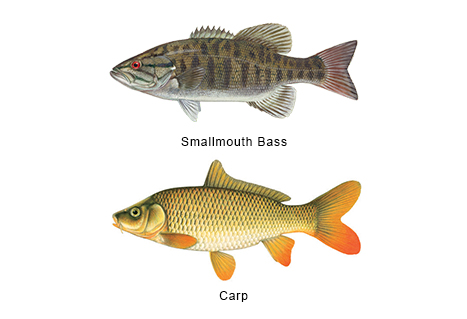
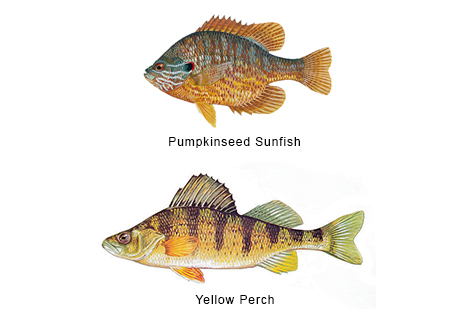
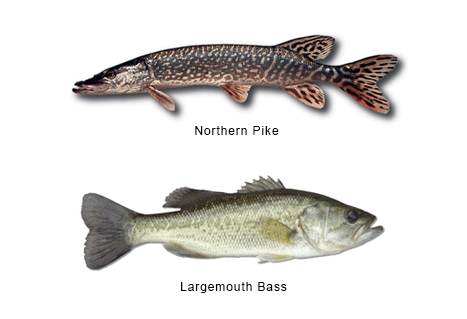
The BC Inter-Ministry Invasive Species Working Group’s website provides an illustrated list of priority invasive species. There is also an identification guide on the Invasive Species Council of BC’s website.
Click below to read the Identification Guide to Prohibited Aquatic Invasive Species in B.C., which describes species of fish and mussels that are prohibited from possession, sale, breeding, release, sale or transport in B.C.
What is being done to control or counteract the spread of invasive fish?
Where invasive species pose a high risk, measures are taken where possible to remove or control them. To deter future introductions, and prevent the additional spread of species, a closure of the fishery (species or entire waterbody) may be implemented when a new introduction of an invasive species has been identified. In 2017, with the discovery of yellow perch and largemouth bass, two popular East Kootenay lakes – Fussee and New – were closed to sport fishing. As you can see, this problem does have the potential to impact your plans to head out fishing on your local lake.
What should you do to help prevent the spread of invasive species?
- Do not use live fish as bait (it is illegal)
- Do not release aquarium fish, live bait, or live food (e.g. crabs, snails, etc.) into the wild.
- Do not keep fish that you have caught alive in live wells or on stringers.
- Never move live fish from one waterway to another. The government asks that you call the Conservation Officer 24-Hour Hotline at 1-877-952-RAPP (7277) to report any suspicious activity related to the illegal transfer of live fish. If the situation is not an emergency, report the incident online, or contact the nearest Conservation Officer Service district office. You can also use your smartphone to report invasive species using the Report Invasives BC App.
- Clean, Drain and Dry your watercraft:
- Clean: After a watercraft is pulled from the water, thoroughly clean all plants, animals, and mud from the watercraft, motor, trailer, and other equipment.
- Drain: Drain all water onto the ground from the watercraft (including bilges, engine compartments, hull, and intakes) and from any containers that can hold water (like bait containers, live wells, and ballast).
- Dry: Allow all items to dry completely before transporting the watercraft and equipment to another water body.
You can find more information on the BC Inter-Ministry Invasive Species Working Group website.
Can you harvest invasive fish species
Many invasive species, such as largemouth and smallmouth bass, yellow perch, and northern pike come under the definition of game fish within the Freshwater Fishing Regulations Synopsis. Where the regulations allow, you may keep the invasive fish that you catch. Sometimes fisheries for invasive species will be closed; these will be listed in the regulations. If that is the case you must not target the species and you should release any incidental catches.
Author: Jessica Greinke, Freshwater Fisheries Society of BC
